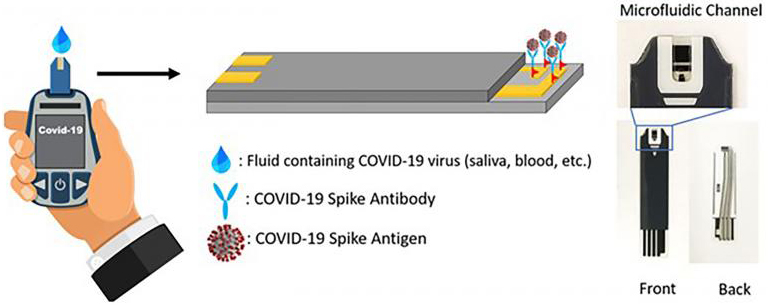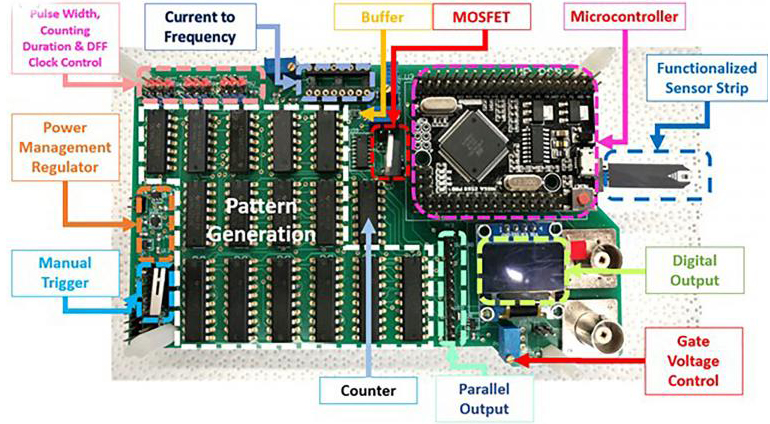
Researchers at the University of Florida and the National Chiao Tung University in Taiwan have developed a microfluidic device that can detect the SARS‑CoV‑2 spike protein in a saliva sample within one second. The electrochemical device employs antibodies against the spike protein to detect the virus, and could allow for ultra-rapid COVID-19 testing.
Testing is still a cornerstone in our fight against COVID-19. While the pandemic has calmed in certain regions of the world, others are still badly affected, and it will be a long time before robust testing regimes are no longer required. The current gold standard is the PCR test, which is a leader in terms of accuracy, but requires highly trained staff and specialized laboratory equipment, resulting in significant lag times between sample collection and obtaining results.
As society opens up, more rapid testing methods may have a place in monitoring the spread of the virus, and researchers have not disappointed in their efforts to develop such technologies. This latest device builds on the expertise of researchers who have previously developed technologies to detect biomarkers for heart attacks, cerebral spinal fluid leaks, and the Zika virus.
Strikingly, the new COVID-19 test boasts a near instant detection time, providing a positive or negative result in as little as 1 second. “This could alleviate slow COVID-19 testing turnaround time issues,” said Minghan Xian, a researcher involved in the study, via a press release.
Viral detection occurs on a gold electrode studded with antibodies against the viral spike protein, which can be loaded with a sample, such as saliva. Spike protein binding to the electrode will change the electrical charge that runs through it, allowing the device to detect the virus. The entire electrode is included in a single-use test strip that a user connects to handset to perform the analysis.
“Our biosensor strip is similar to commercially available glucose test strips in shape, with a small microfluidic channel at the tip to introduce our test fluid,” said Xian. “Within the microfluidic channel, a few electrodes are exposed to fluid. One is coated with gold, and COVID-relevant antibodies are attached to the gold surface via a chemical method.”

As the level of spike protein in a sample may be small, the test amplifies the signal to enable more accurate detection. “Our sensor system, a circuit board, uses a transistor to amplify the electrical signal, which then gets converted into a number on the screen,” added Xian. “The magnitude of this number depends on the concentration of antigen, the viral protein, present within our test solution.”
Study in Journal of Vacuum Science & Technology B: Fast SARS-CoV-2 virus detection using disposable cartridge strips and a semiconductor-based biosensor platform
Via: AIP Publishing
